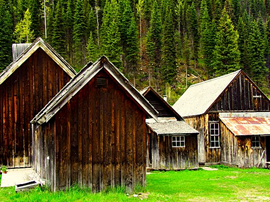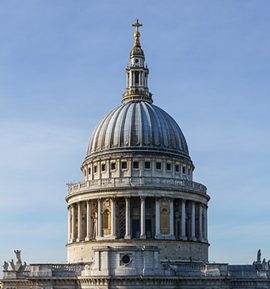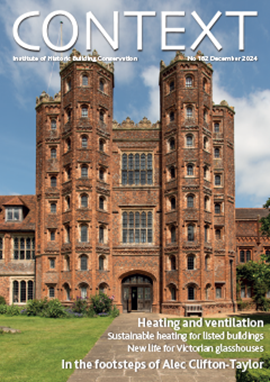Housing defects
Defects are aspects of a building that are not performing adequately for their intended use.
Defects may occur because of:
- Design deficiencies.
- Product or material deficiencies.
- Poor specification.
- Workmanship deficiencies.
- Maintenance deficiencies.
- Changes of use.
- Environmental influences.
Some defects are apparent (patent defects) and some are hidden (latent defects).
A National New Home Customer Satisfaction Survey undertaken by the Home Builders Federation (HBF) and the National House Building Council (NHBC) in 2015, found that 93% of buyers reported problems to their builders, and of these, 35% reported 11 or more problems.
Defects in new buildings may be attributable to designers, suppliers or contractors, and may result in a claim. In addition, during the first 12 months or so after completion (depending on the terms of the construction contract), the contractor may be required to remedy defects during a time commonly referred to as the 'defects liability period', and beyond that there may be some form of ongoing warranty.
In addition, irrespective of contractual obligations, the Defective Premises Act 1972 provides that a person taking on work for, or in connection with, the provision of a dwelling owes a duty to the person acquiring the dwelling and subsequent purchasers to see that the work which they take on is done in a workmanlike or professional manner, with proper materials so that it will be fit for habitation when completed.
However, defects in older buildings may not be clearly attributable to a particular party, but may result from a change in circumstances or use, an environmental impact, poor maintenance and so on, or from a combination of factors.
The housing stock in England is relatively old, with approximately 44% built before 1980, and 20% built before 1919. As a result it is prone to poor performance and a number of common defects.
The list below provides links to articles on Designing Buildings Wiki that provide information about common defects in housing:
- Carbon monoxide emissions.
- Cold bridge.
- Contaminated land.
- Cracking and building movement. (see also: Ground heave / Settlement / Subsidence).
- Damp (see also: Penetrating damp / Rising damp)
- Condensation (see also Interstitial condensation)
- Defects in brickwork (see also: Efflorescence / Spalling).
- Defects in dot and dab.
- Defects in stonework.
- Dry rot.
- Flooring defects.
- Hazardous substances (See also: Asbestos).
- Indoor air quality.
- Mould growth.
- Roofing defects (See also: Flat roof defects).
- Sick building syndrome.
- Wall tie failure.
- Wet rot.
- Woodworm.
Other common problems may include:
- Defective chimneys.
- Defective rainwater fittings, plumbing or drainage.
- Defective windows.
- Defective wiring.
- Defective plumbing.
- Draughts.
- Inadequate ventilation of the sub-floor or roof space.
- Excessive energy consumption.
- Poorly installed insulation.
- Poorly installed or absent damp proof course.
- Decayed or damaged windows and doors.
- Sound transmission.
- Encroachment by trees.
- Chimneys that have been blocked up, but not filled.
- Infestations.
[edit] Find out more
[edit] Related articles on Designing Buildings Wiki
- Building pathology.
- Bungalow.
- Certificate of making good defects.
- Defective Premises - Liability and Measure of Damages.
- Defective Premises Act.
- Defects liability period.
- Defects.
- Dwelling.
- English housing stock age.
- Flat definition.
- Household.
- Housing Defects Act 1984.
- NHBC.
- Remedial work.
- Residential definition.
- Schedule of condition.
- Schedule of defects.
- Scott schedule.
- Types of dwelling.
- Types of household.
- Use class.
- Wellbeing.
[edit] External references
IHBC NewsBlog
IHBC Annual School 2025 - Shrewsbury 12-14 June
Themed Heritage in Context – Value: Plan: Change, join in-person or online.
200th Anniversary Celebration of the Modern Railway Planned
The Stockton & Darlington Railway opened on September 27, 1825.
Competence Framework Launched for Sustainability in the Built Environment
The Construction Industry Council (CIC) and the Edge have jointly published the framework.
Historic England Launches Wellbeing Strategy for Heritage
Whether through visiting, volunteering, learning or creative practice, engaging with heritage can strengthen confidence, resilience, hope and social connections.
National Trust for Canada’s Review of 2024
Great Saves & Worst Losses Highlighted
IHBC's SelfStarter Website Undergoes Refresh
New updates and resources for emerging conservation professionals.
‘Behind the Scenes’ podcast on St. Pauls Cathedral Published
Experience the inside track on one of the world’s best known places of worship and visitor attractions.
National Audit Office (NAO) says Government building maintenance backlog is at least £49 billion
The public spending watchdog will need to consider the best way to manage its assets to bring property condition to a satisfactory level.
IHBC Publishes C182 focused on Heating and Ventilation
The latest issue of Context explores sustainable heating for listed buildings and more.
Notre-Dame Cathedral of Paris reopening: 7-8 December
The reopening is in time for Christmas 2025.
















